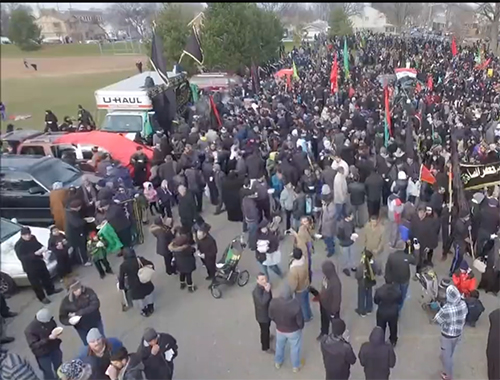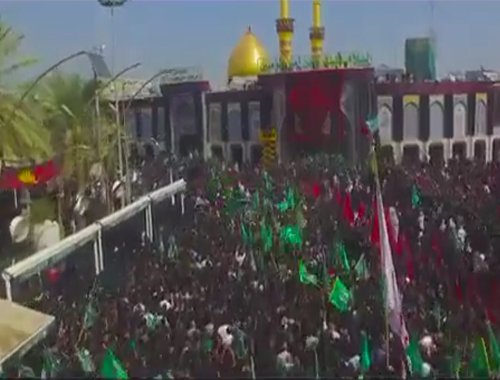
The visit of Prophet Abraham and Isaac and Abraham's prediction and desire to buy the Valley of Peace.
Those who have visited Najaf will remember vividly that to the north and east of the town there are acres of graves and myriads of domes of various colours and at various stages of disrepair. Whoever goes to Najaf will follow a road that approaches the town by a winding course through this vast cemetery. The Prophet Abraham had come to this place along with Isaac; there had been many earthquakes in the vicinity, but while Abraham remained there, there were no tremors. On the night, however, when Abraham and Isaac went to a different village, and sure enough Najaf was visited with another earthquake. When they returned, the people were most eager for them to make Najaf their permanent dwelling-place. Abraham agreed to do so on condition that they would sell him the valley behind the village for cultivation. Isaac protested and said that this land was neither fit for farming nor grazing, but Abraham insisted and assured him that the time would come when there would be a tomb there with a shrine, at which seventy thousand people would gain absolutely undisputed entrance to Paradise, and be able also to intercede for many others. (Majlisi op. cit. page 108)
The valley that Abraham wanted to buy is called the Valley of Peace (Wadiu's-Salaam), and it is related on the authority of the fourth Imam, that Ali once said that this Valley of Peace is part of Heaven and that there is not a single one of the believers in the world, whether he dies in the east or west, but his soul will come to this Paradise to rest. (Mailisi op. cit. Page 111) "As there is nothing hidden in this world from my eyes," Ali went on to say, "I see all the believers seated - here in groups and talking with one another."
How Najaf was given its name is explained in the tradition. At first there was a mountain there, and when one of the sons of Noah refused to enter the Ark, he said that he would sit on this mountain until he would see where the water would come. A revelation came therefore to the mountain, "Do you undertake to protect this son of mine from punishment?" And all at once the mountain fell. to pieces and the son of Noah was drowned. In place of the mountain a large river appeared, but after a few years the river dried up, and the place was called Nay-Jaff, meaning, "the dried river." (Majlisi op. cit. page 111)
And so as per the prediction of Abraham, Imam Ali was buried here.
Ali is absent today from our midst only physically. His soul even to this day is the greatest spiritual resort everyone who seeks the help of God through his medium. Thousands and thousands of people call out to him in their difficulties, and the word "Ya Ali Madad", automatically comes to them. A famous prayer known as "NADEY ALI" (Call Ali) is recited wherever abound the lovers of Ali.
The deer hunting incident of Harun al-Rashid
"During the reigns of the Umayyad Caliphs his blessed resting-place could not be disclosed, and so it was also under the Abbasids until the reign of Harun al-Rashid. But in the year 175 A.H. (791 A.D.), Harun happened to go hunting in these parts, and the deer he was chasing took refuge on a small piece of raised ground. However much he asked his hunting dogs to capture the quarry, they refused to go near this spot. He urged his horse to this place, and the horse too refused to budge; and on this, awe took possession of the Caliph's heart, and he immediately started to make inquiries of the people of the neighbourhood, and they acquainted him with the fact that this was the grave of Imam Ali ibn Abu Talib, the cousin and son-in-law of the Holy Prophet. Harun ordered a tomb to be erected over the grave, and people soon began to settle down in its vicinity." (The Shrine of Ali at Najaf from "The Shi'ite Religion" by Dwight M. Donaldson)
Reference: Imam Reza.Network
 Holy Najaf - Islam Guidance
Holy Najaf - Islam Guidance









